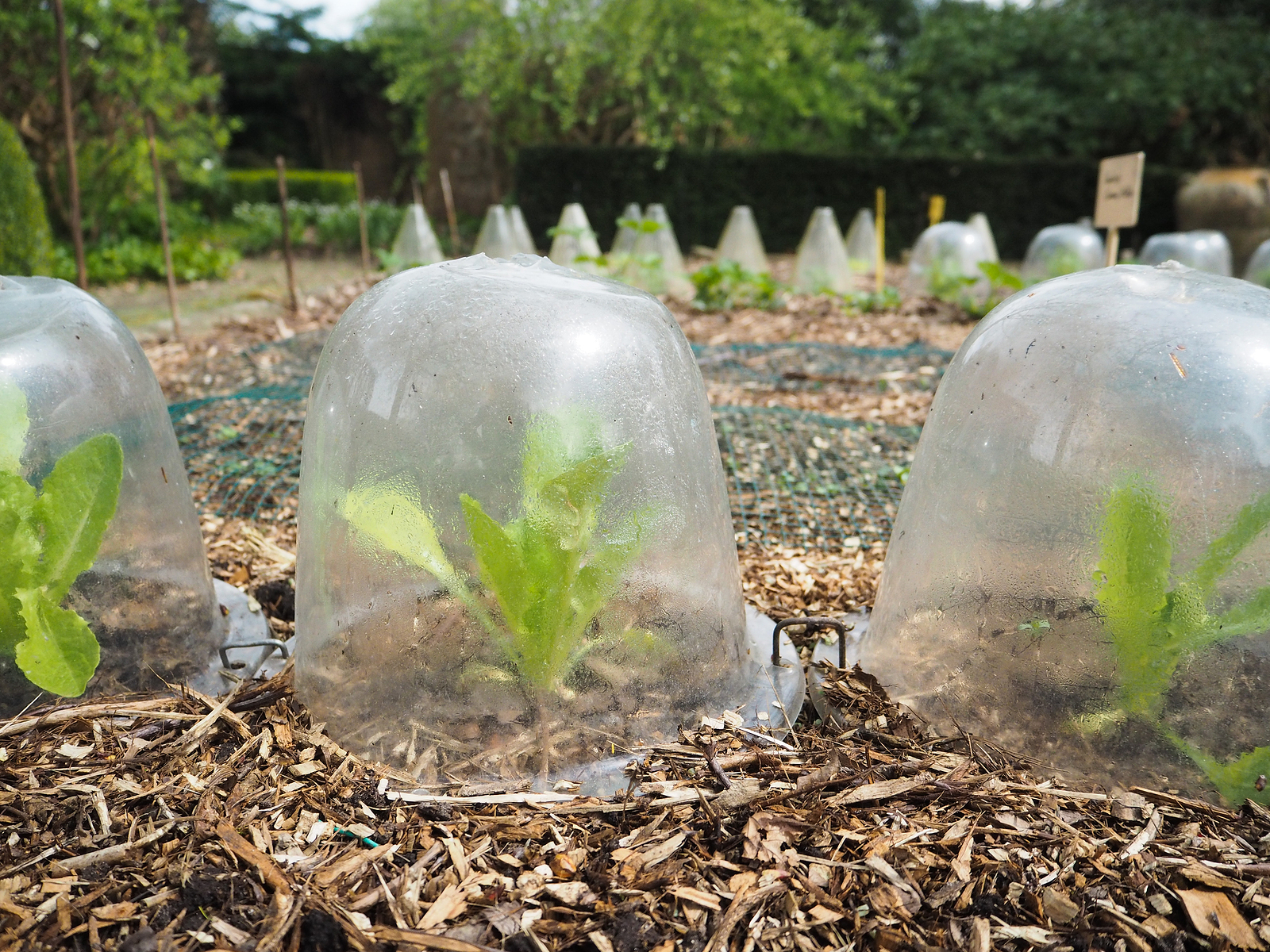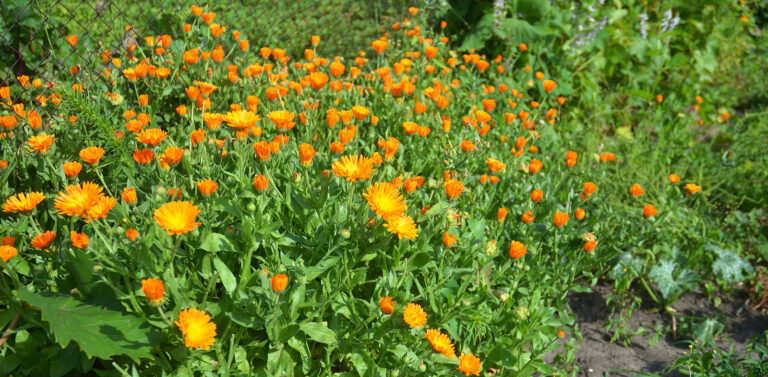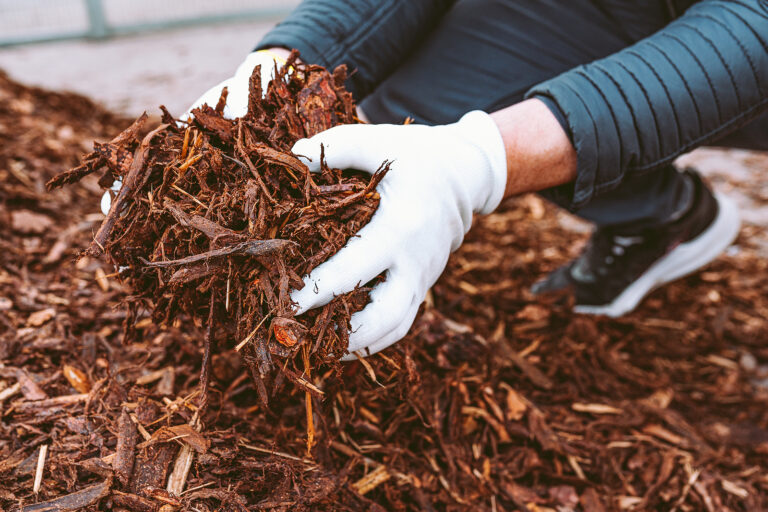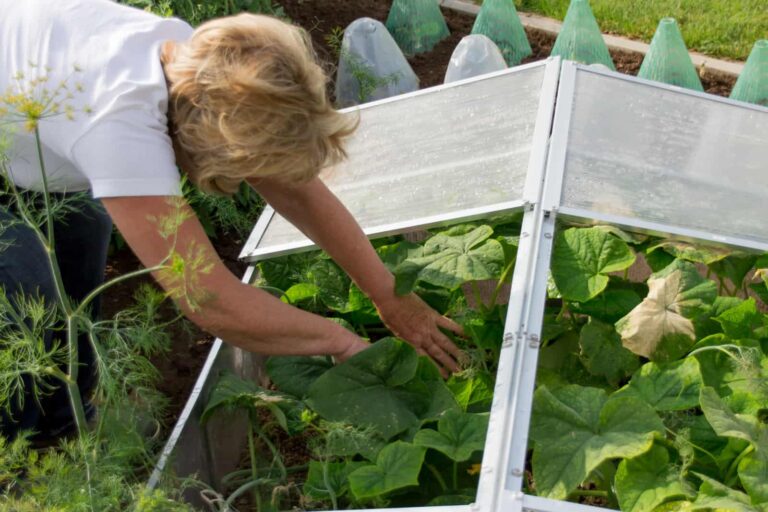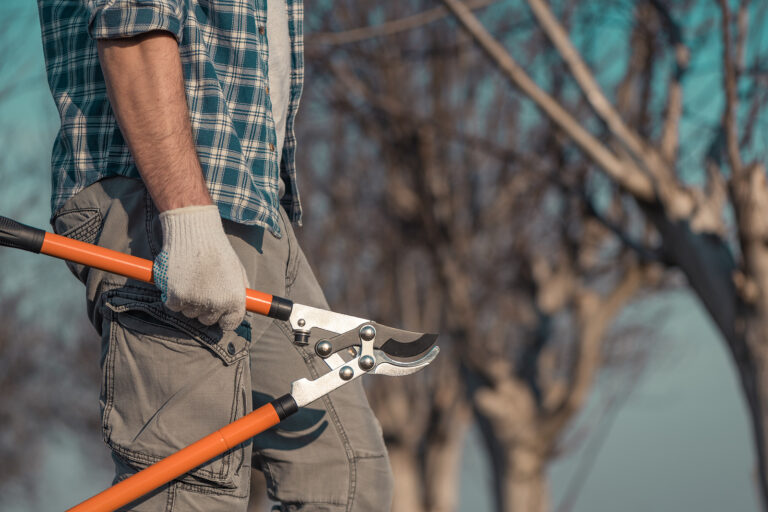Garden Cloche and Hot Cap Buyer’s Guide
Garden cloches — also called hot caps — are plastic, fabric, or glass covers than function as mini greenhouses to protect individual plants from inclement weather or pests. Hot caps are effective at deterring frost on chilly nighs and warming plants on cold days. They can also be used to protect plants from insect or animal pests.
Cloches and hot caps are also know as season extenders, plant protectors, and plant covers. They are usually placed over small plants and anchored in place by garden staples, stakes, soil, or stones.
Cloches are often translucent or clear. They trap solar energy and warm the air around plants. They are often used in early spring or autumn to protect plants from frost or heavy rain.
A cloche or hot cap works very much like a cold frame, but it’s portable. Clear cloches allow light to pass through the material so that a plant’s green leaves can still photosynthesize. Some plastic or fabric cloches are large enough to place over several plants. A cloche that covers an entire row of plants is called a row cover or fabric or plastic tunnel.
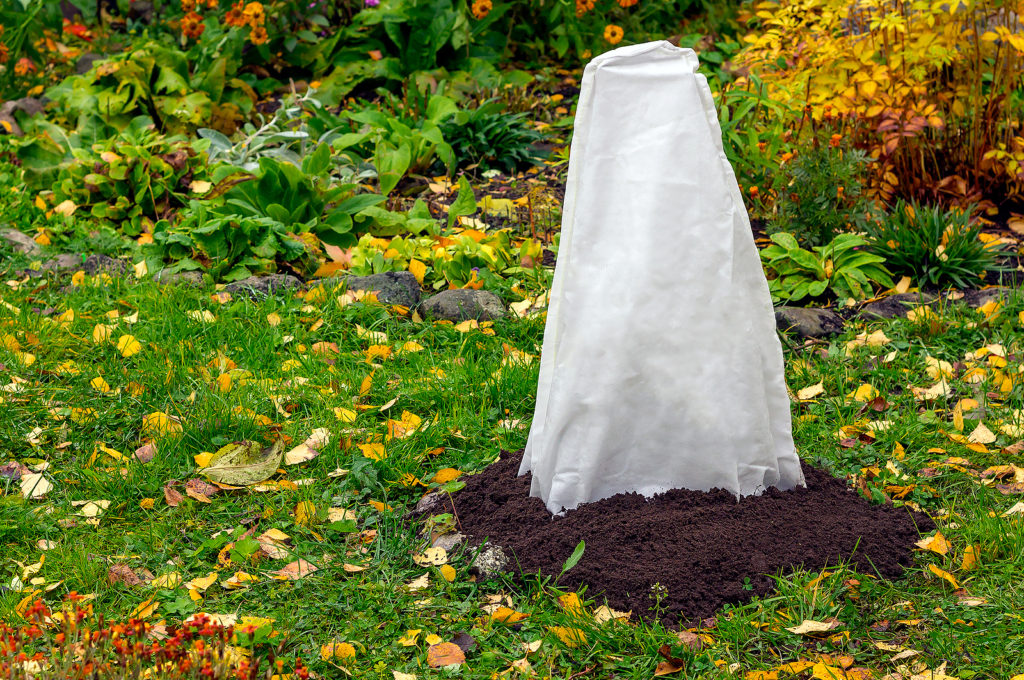
Types of cloches and hot caps
There are many both simple and ingenious designs for cloches and hot caps. Glass cloches or domes with knob-like handles are traditional; they were common in the nineteenth centruy. Some cloches are made of galvanized wire mesh covered with plastic to paper. The most familar are molded plastic. One design of interconnected clear plastic tubes that hold water. The water retains solar heat during the day and releases it at night, acting as a temperature moderator and insulator.
Commercial cloches come in various sizes and shapes. It is not difficult to make a small cloche from a gallon-size milk jug. Cut through the base of the jug on three sides, open out the bottom and place the jug over a plant; use a stone weight the bottom flap.

Garden cloche and hot cap uses and tips
- Use cloches and hot caps to protect young, small, and tender plants during early spring from frosts and cold winds. Crops such as tomatoes, peppers, and other transplants can get a head start when a cloche is placed over them in spring.
- Use cloches and hot caps to extend the seaon into autumn, again protecting plants from frost and rain.
- Use cloches and hot caps to protect seedlings from birds, insects, and hard rains.
- Be sure to remove the cloche when the day temperatures are particularly warm (75°F or greater); plants may heat up too much under a closed cloche. As temperatures rise, remove the cloche or hot cap to allow trapped heat to escape. Cloches and hot caps can be very labor intensive if temperatures fluctuate dramitcally.
- If you remove a cloche as daytime temperature rise, set it back in place when the temperatures begin to drop.
- Stop using cloches and hot caps when temperatiures stay consistently well above freezing. You can use a wire mesh cloche in late spring and summer to protect plants from pest insects or animals.
- If you plan on using cloches for several years, buy the higher-priced fabric or solid plastic ones that will last, and store them in a dry place between seasons.
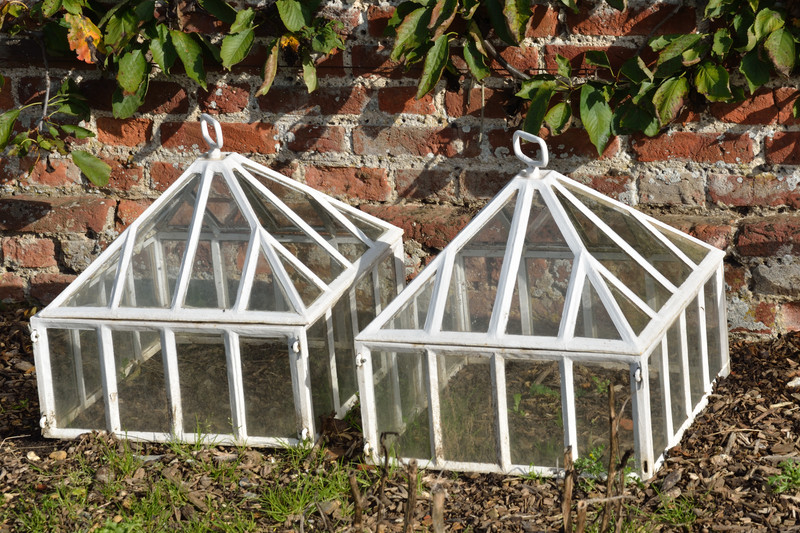
Related articles:
Choosing Plants for Containers
Flower Gardening in Containers
Container Vegetable Gardening Guide
Pot and Container Sizes for Growing Vegetable Crops
Container and Pot Sizes: How Much Soil Do I Need?

